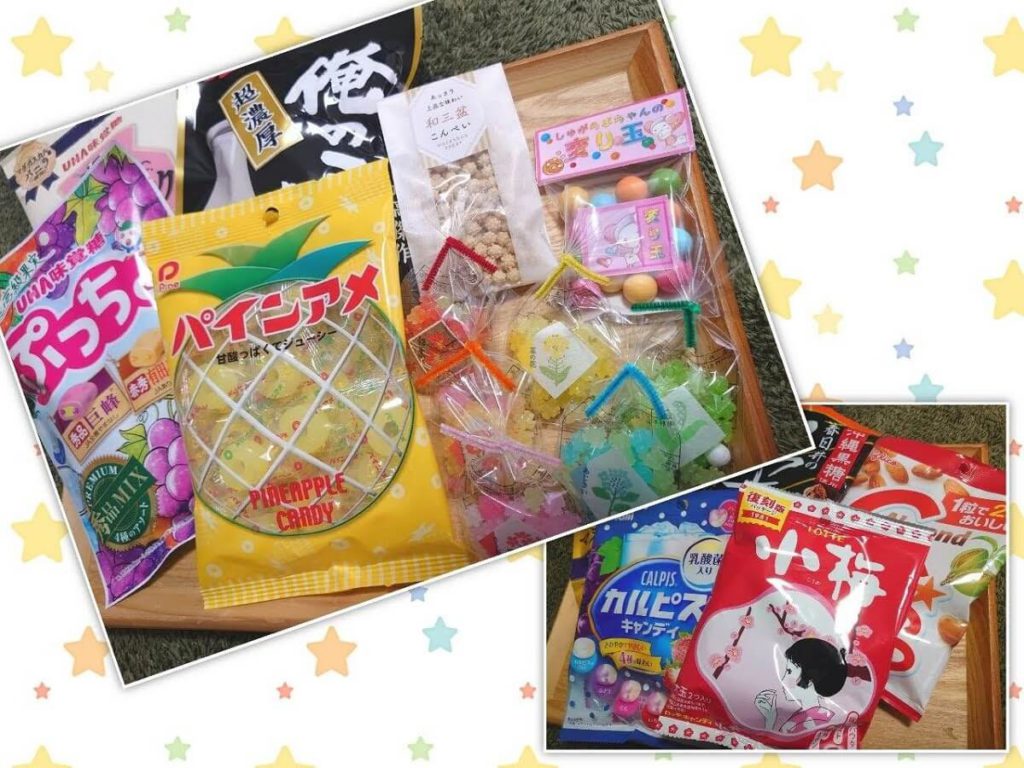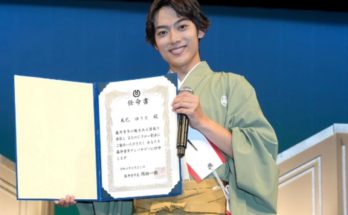“Chan” “San”
I’ve called hard candies “Ame-chan”, and I have lived my life without questioning it. As I have more opportunities to talk about cultural differences with people who live in other prefectures, I have come to know that Osaka has some unique customs. It’s very interesting to research the meanings and history of some words I use casually.
When it comes to what middle aged Osakan women carry in their bag, it is “Ame-chan” .
Well, I’m not talking about the “chan” or “san” which are respectful titles to put after a name in Japanese. I’ll introduce the custom of Osakan people calling candy “Ame-chan”, which has become well known through nationally televised Japanese TV programs.
The custom of adding “o” and “san” to food

In the Kansai region, there is a unique custom of adding “o” and “san” to food, “O imo san”, where “imo” means potato, “o mame san”, where “mame” means beans, things like that. This language seems to have spread from the Gosho language of Kyoto called “nyoubou kotoba 女房言葉” and originated from wives (nyoubou: 女房) using that language in the imperial court in the Muromachi era from 1336-1573. It seems that they added “o” and “san” to precious food. It is said that it was the start of this custom.
Gosho language was used among women, so “o” and “san” were added to make food more polite, beautiful and clear. It seems that since then men have used the terms at home, and that custom spread via merchandisers to Osaka by the Edo era, around the 16th century.
So, why do Kansai people call candy “Ame-chan”, not “O-ame-san” or “Ame-san”?
About candy, many Kansai people carry candy in their bags. There is a theory that since candy is a more familiar item among sweets, only candy was given “chan”, and that is why it might have become called “Ame-chan”.
Why do they carry candy?

There are many manufacturers of candy in Osaka, “Paine-ame:パインアメ” by Pine Co., Ltd., “Nodoguro-ame:のど黒飴” by NOBEL Confectionary Co., Ltd., “Puccho:ぷっちょ” by UHA Mikakuto Co., Ltd., “O-gontou:黄金糖” by Ogontoh Co., Ltd., and “Konpeitoh:コンペイトウ” by Osaka-toka Co., Ltd., etc. In the old days, Osaka used to be a sugar town. In the Edo era from 1603-1868 when Osaka was called “The Nonpareil Kitchen” (nickname for Osaka), almost all sugar, both domestic and foreign, was gathered in Osaka and shipped nationwide. In particular, the Sakaisuji area had many sugar wholesalers. Sugar was sold originally as a medicine for nutritional fortification, so Sakaisuji, which had many pharmacies, was the point of focus of sugar wholesalers from the days of old. The price of sugar went down starting in the middle of the Edo era when sugar spread throughout the nation, and consumption of sugar increased. There are about 200 sugar marchants in the Sakaisuji area alone at the best of times. I knew the history of Osaka and candy have a good connection.
Middle aged women in Kansai (大阪のおばちゃん)

Speaking of middle aged women in Kansai, they are known as loving chatting and being cheerful, and they typically wear a cloth printed animal pattern. In addition, they carry candy in their bag all the time. That reputation is spreading here and there, but in fact, not everything is true… except for the carrying candy part! Middle aged women in Kansai call candy “Ame-chan” and not only enjoy eating it, they use it as a communication tool with others. They sometimes give it to strangers, not only their friends, family, co-workers. As a town of merchants, there is a strong desire to get along with others, and I think they value connections with others a lot. And one way to achieve that is by giving candies away!

Just to let you know, my mother carries many kinds of Ame-chan in a small pouch in her bag. If I asked her to give me candy, I would definitely get it. I also put Ame-chan into my bag before going out as a habit. I think that is the trend in Kansai, not only for middle aged women.
Communication is created by handing a piece of candy to the person next to you on the bus or train. If you have a chance to visit the Kansai region, don’t be surprised if the lady next to you gives you a piece of candy.
Thank you.
I’m a clay artist, and a master of Japanese calligraphy “Onore-sho”. I have my own shop in Ikaruga town, Nara, which is near Horyuji temple: world heritage site. And I’m a volunteer English tour guide. I enjoy learning English everyday.





 HTJ has a YouTube page! Check it out
HTJ has a YouTube page! Check it out
Ami chan! l listened to your audio on my way to your home.
I was grinning to myself on the train in the part of 大阪のおばちゃん’s habit!
By the way, I didn’t know there are so many Osaka-native candies in addition to パイン飴, and about the history of sugar.
l enjoyed your article as always!
Hi Chisato!
What an excellent article! I love the tradition of carrying candy as a way to make friends.
In today’s world, I fear that this custom will be lost. I wonder (as an older gentleman) if I could offer candy to strangers, especially children, without causing someone unease?
I’d like to try, and perhaps I should ask the parent first…